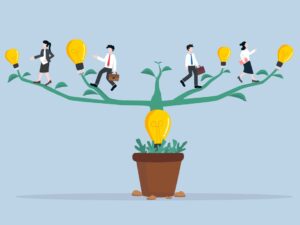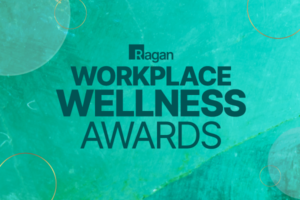The revolution in wellbeing and the employee experience is here
A look at the evolving landscape of employee wellbeing programs, aligning benefits with personal and professional needs in the workplace.

Did you know more than half of U.S. working parents who pay for childcare estimate they spend at least 20% of their salary on daycare? When we look at your employees and their wellbeing, this is an example of how personal stress and anxiety seep into work. Corporate wellbeing programs are no longer just about virtual yoga sessions, smoothie-making workshops, and stair challenges.
The revolution in how we work has caused us to reexamine how companies provide their employees with the right benefits and wellbeing support. And prospective employees are taking that information and comparing it to prospective employers.
For instance, when it comes to benefits, do your employees:
- Understand the benefits offered? Are your managers aware of them so they can have real-time discussions with their teams if they come to them with a problem?
- Believe these benefits align with their personal, family and professional needs? Are these benefits reflective of the needs and wants of your employees, who are thinking about themselves, their careers and their families?
- Use the benefits offered? Are the wellbeing benefits your team has been working so smartly to put together actually being used by your employees?
- Feel listened to and confident you’ll act? Are you working with employee resource groups and other communities within your company to garner feedback on wellbeing benefits? And are you returning to those groups showing how you’ve listened to and applied feedback?
- Receive messages clearly and concisely? When your employees view your message, do they understand what’s needed from them?
- Receive messages consistently? It takes, on average, seven touchpoints for people to grasp a message. You might feel like you’re overcommunicating; that’s ok!
[RELATED: Join us Aug. 14-16 in Denver for our Employee Experience & Wellness Conference]
Answers to these questions are critical as companies are designing holistic wellbeing programs. The companies I work with look at enterprise-wide employee well-being programs through the lens of:
- Financial wellbeing: Did you know among employees with an annual household income of $100,000 or more, 52% report feeling stressed by finances? How is your company helping your employees to manage their money?
- Mental wellbeing: From meditation apps to therapy sessions, your company might have invested heavily in this area. But have you examined the root causes of the work-related mental stressors impacting your employees?
- Physical wellbeing: Your company might have upped its game with gym reimbursements, but are your managers demanding their employees be on camera for all meetings? Eight hours of video calls daily can impact mental and physical well-being.
- Social wellbeing: Does the company foster social connections? Examples might include resources and training to help managers and leaders create a sense of caring and belonging among employees. These are critical factors, particularly in a hybrid/remote work environment.
- Community wellbeing: Did you know volunteering can increase empathy across your organization? A 2020 study conducted in the United Kingdom found those who volunteered reported being more satisfied with their lives and rated their overall health as better.
- Career wellbeing: Fostering competence is imperative for employees looking to grow in their careers. This includes helping people feel capable and effective in their work by empowering them to use their strengths and express their capacities.
And once you’ve designed your plan, you need to consider it in terms of your entire employee experience, including but not exclusive to:
- Your website. No longer is your website just for customers. Your prospective employees are looking at your website to learn about your company. How are you selling yourself to job applicants?
- Your job descriptions. Throw out “nimble,” “fast-paced,” and “agile” from your job descriptions. Get specific on expectations and how their wellbeing is prioritized.
- The interview. From the recruiter to peer interviews to the hiring manager and other stakeholders, prospects will ask how the culture is at the company and how employee wellbeing is a priority. How they address the question will impact whether there’s a fit for the candidate.
- What’s unsaid. Ever start a new job, have no clue about your role or expectations, and are unaware of those “unspoken rules”? These cause unnecessary stress and anxiety spikes. Mitigate them early so your employees know what to expect.
- What’s talked about. How are your employees talking about wellbeing at your company during information interviews, professional events, and other moments when people might decide about applying for a job?
- Empathetic leadership. Leading with empathy can help grow and retain your employees, which will pay for itself many times over.
Finally, will addressing the above impact the company’s business goals? Your C-suite needs this information in a language directly tied to business returns, including turnover, presenteeism, and health care costs. Recommendations must be research-based through first-party quantifiable and qualifiable data from your employees, designed with measurable objectives, and paired with relatable, practical, and actionable tactics to benefit the employee and employer.
We have reached a new era in the relationship between employee and employer. I look forward to seeing how this evolves in the coming months and years.
Mark will be speaking at this year’s August 14-16, Ragan’s annual Employee Experience & Wellness Conference where he will discuss the employee experience journey — from onboarding to offboarding. Register now!







